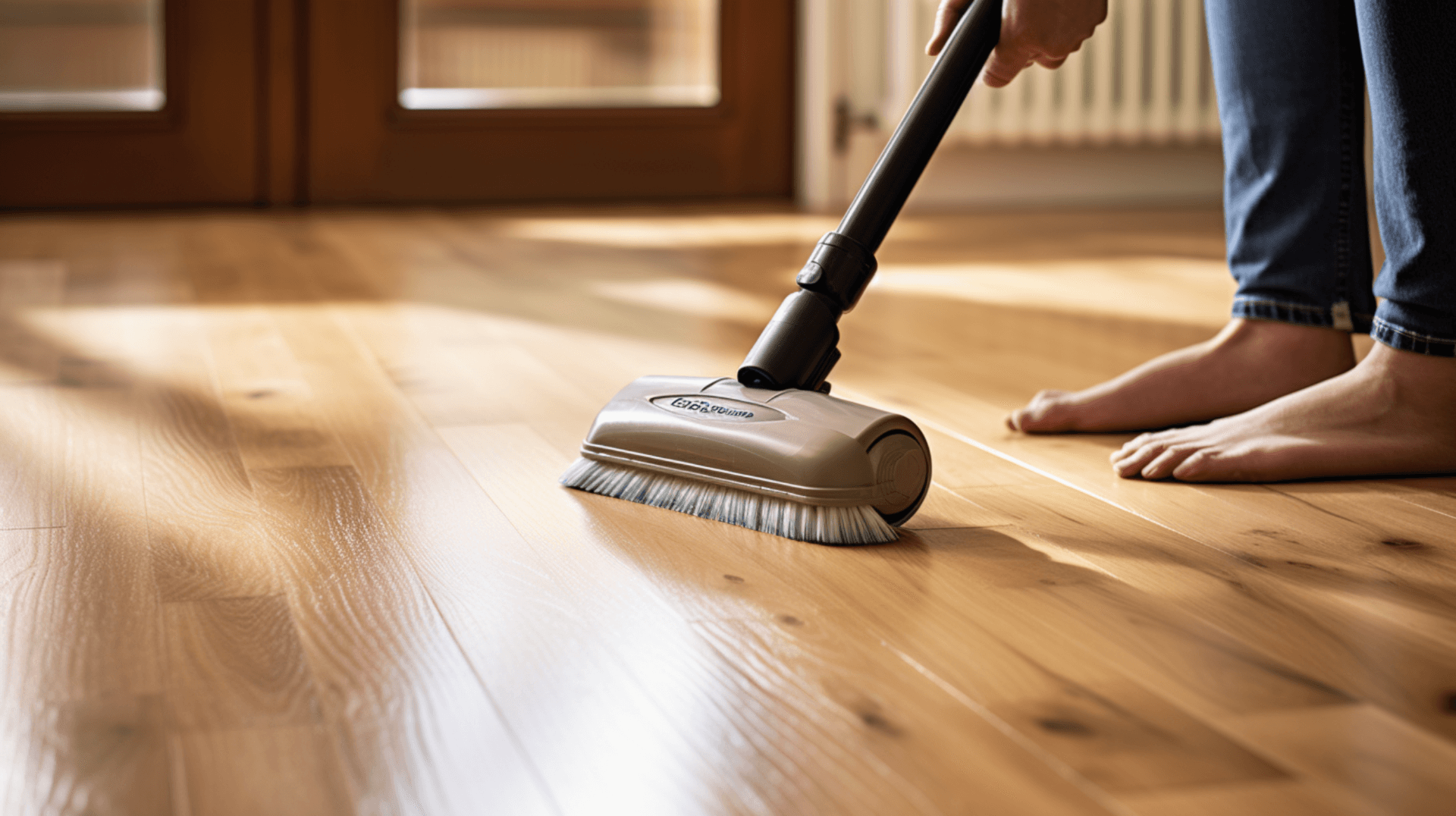Understanding the Impact of Pet Scratches on Wooden Floors
Wooden floors are a popular choice for both home and business owners due to their aesthetic appeal and durability. pet scratches can pose significant risks to these floors.
Pet scratches can greatly affect the aesthetic of wooden floors. they can leave unsightly marks and scratches, detracting from the beauty of the floor and making it look worn and aged. these scratches can be deep and wide, making them difficult to repair without leaving noticeable patches. this can greatly diminish the overall appeal of the floor.
Pet scratches can also impact the durability of wooden floors. when a pet’s claws catch on the surface of the wood, they can leave behind deep gouges and scratches. these scratches weaken the wood, making it more susceptible to further damage. the weakened wood can be easily scratched or dented, reducing the lifespan of the floor.
It is crucial to protect wooden floors from pet scratches in order to maintain their aesthetic appeal and durability. Regularly trimming a pet’s nails can help reduce the risk of scratches. Additionally, using rugs or mats in areas where pets are likely to scratch can provide an extra layer of protection. Applying a protective coating to the wooden floors can also help reduce the risk of scratches and other damage.
By taking these necessary steps, home and business owners can ensure that their wooden floors remain in good condition for years to come.
The Science Behind Scratches: Why Wooden Floors are Vulnerable

Wooden floors are a popular choice for both home and business owners due to their aesthetic appeal and durability. pet scratches can pose significant risks to these floors. Understanding the science behind why wooden floors are vulnerable to scratches can help owners protect their floors from damage.
Wooden floors are susceptible to scratches due to their physical properties. Wood is a porous material, meaning it is made up of tiny holes and channels that can easily be filled with dirt and debris. This makes it more prone to scratches and other damage. Additionally, wood is a relatively soft material, making it more vulnerable to scratches and dents.
Pets can also play a role in causing scratches on wooden floors. Pets’ claws are sharp and can easily catch on the surface of the wood, leaving behind deep gouges and scratches. Additionally, pets can bring dirt and debris into the home, which can further damage the wood.
To protect wooden floors from scratches, it is important to take preventive measures. Regularly trimming a pet’s nails can help reduce the risk of scratches. Using rugs or mats in areas where pets are likely to scratch can provide an extra layer of protection. Applying a protective coating to the wooden floors can also help reduce the risk of scratches and other damage.
By understanding the science behind why wooden floors are vulnerable to scratches and taking the necessary steps to protect them, home and business owners can ensure that their floors remain in good condition for years to come.
Types of Wooden Floors: Identifying Your Floor’s Vulnerability

Wooden floors are a popular choice for both home and business owners due to their aesthetic appeal and durability. pet scratches can pose significant risks to these floors. Identifying the type of wooden floor and understanding its vulnerability to scratches can help owners protect their floors from damage.
There are several types of wooden floors, each with its own unique properties and level of resistance to scratches. Solid wood floors are made from a single piece of wood and are the most durable type of wooden floor. They are less likely to be scratched or dented by pet claws, making them the most durable and resistant to pet scratches. Engineered wood floors are made from multiple layers of wood and are more resistant to scratches than solid wood floors. Laminate floors are made from a composite material and are the least durable type of wooden floor. They are easily scratched and dented, making them the least resistant to pet scratches. Hardwood floors are made from a variety of woods and are more resistant to scratches than laminate floors. they are still vulnerable to scratches and dents, so it is important to take preventive measures to protect them.
By understanding the different types of wooden floors and their vulnerability to scratches, home and business owners can make informed decisions about the best ways to protect their floors. Regularly trimming a pet’s nails can help reduce the risk of scratches, regardless of the type of wooden floor. Additionally, using rugs or mats in areas where pets are likely to scratch can provide an extra layer of protection. Applying a protective coating to the wooden floors can also help reduce the risk of scratches and other damage.
The First Line of Defense: Preparing Your Wooden Floor for Protection
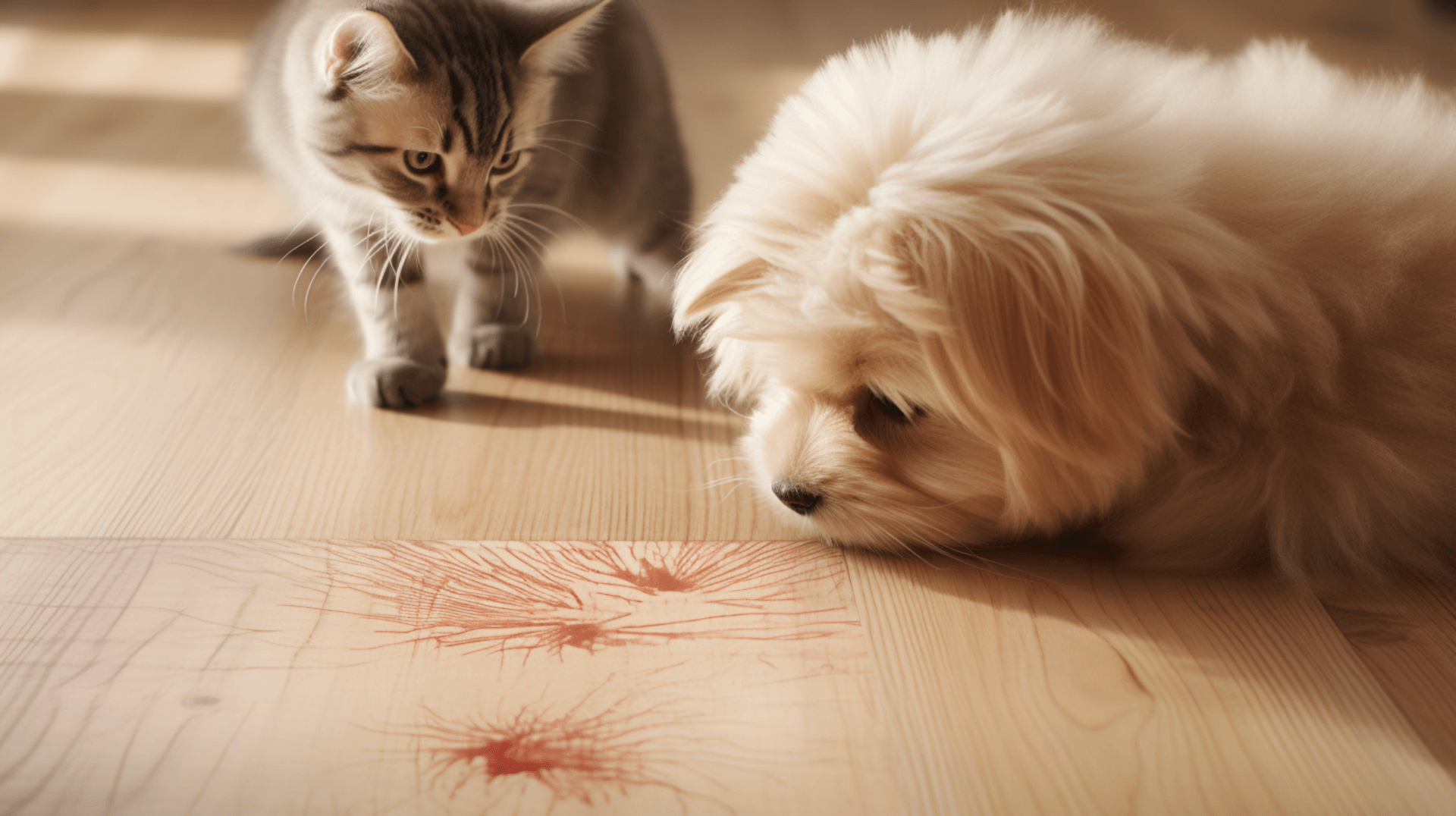
Preparing a wooden floor for protection is the first line of defense against pet scratches. The steps involved in this process are crucial to ensure the floor is properly prepared and protected.
The first step is to identify and repair any existing damage on the wooden floor. This includes checking for scratches, dents, gouges, indentations, and any other abnormalities such as shrinkage or swelling. It is important to address these issues before applying any protection. Repairs can be made by using appropriate tools and techniques to fill in scratches and dents, and to fix loose boards or nails. Additionally, it is important to thoroughly investigate all suspect timbers near potential sources of dampness and any showing evidence of fungal growths. Probing with a sharp implement, like a bradawl, and sounding with a large hammer can help detect internal decay in large-section timbers. Special attention should be given to areas where timbers, such as purlins and joist ends, enter walls, as decay can be localized in those portions embedded in the masonry.
After repairing any damage, the next step is to clean the floor thoroughly. This should be done with a mild detergent and warm water. It is important to remove dirt and debris from the floor, ensuring a clean surface for the protective coating. Harsh chemicals or abrasive cleaners should be avoided, as they can damage the wood.
Once the floor is clean and repaired, the final step is to apply a protective coating. This can be done using a sealant, wax, or polyurethane. These coatings provide an extra layer of protection against pet scratches and other damage. It is important to follow the manufacturer’s instructions when applying the protective coating to ensure proper coverage and effectiveness.
By following these steps and properly preparing the wooden floor for protection, home and business owners can safeguard their floors from pet scratches and maintain their longevity.
Choosing the Right Armor: Protective Coatings for Wooden Floors
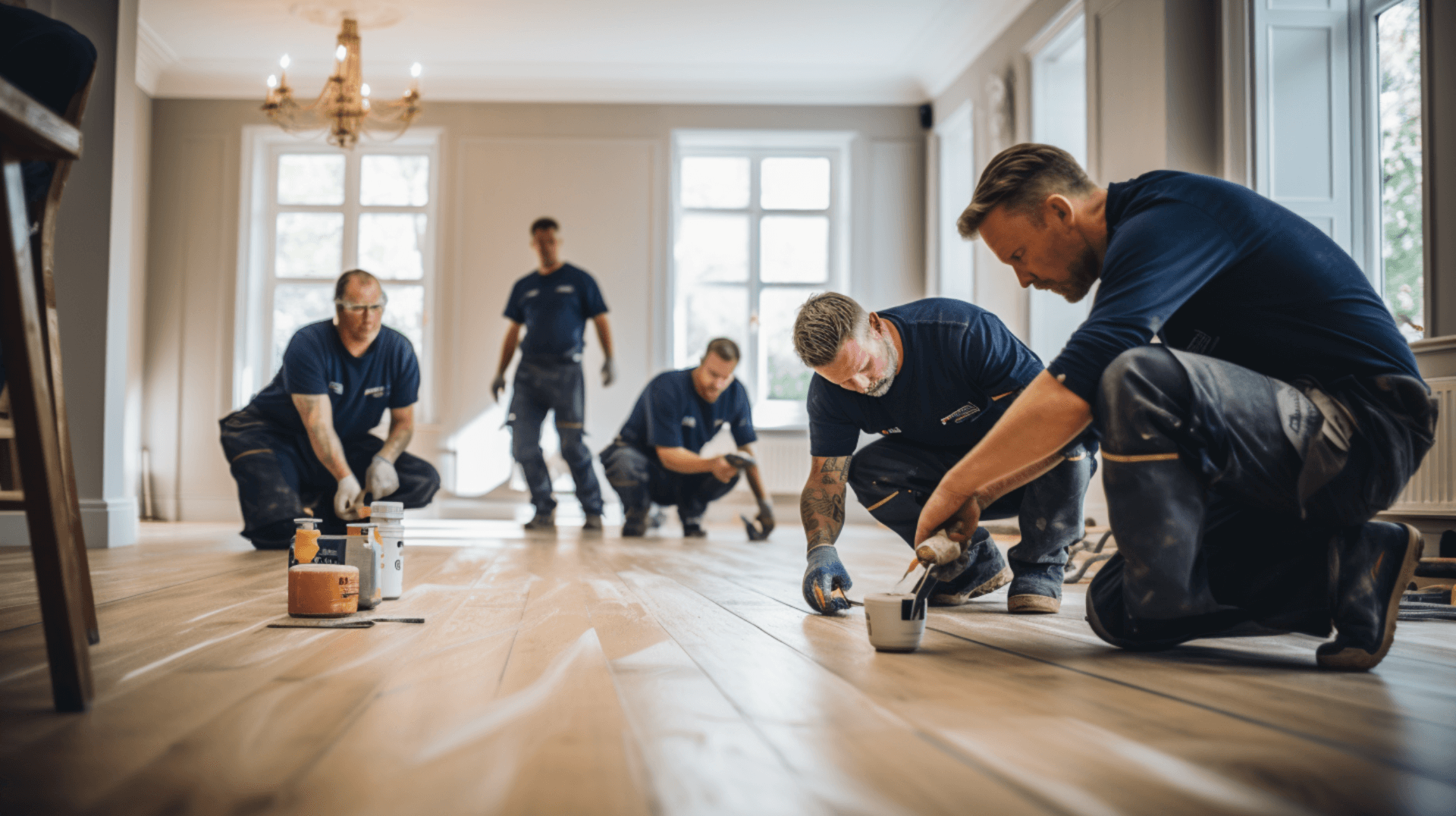
Applying a protective coating to a wooden floor is an important step in protecting it from pet scratches. There are several types of protective coatings available, each with its own pros and cons.
Sealants are a popular choice for wooden floors, as they provide a durable and long-lasting layer of protection. They create a protective barrier against dirt and debris, helping to prevent scratches. sealants can be difficult to remove and may require sanding or stripping.
Wax is another option for protecting wooden floors. It is easy to apply and provides a glossy finish. Wax can enhance the natural beauty of the wood while providing some protection against scratches. it does not provide as much protection as sealants. Additionally, wax can be difficult to remove and may require multiple applications.
Polyurethane is a highly durable option for protecting wooden floors. It provides a hard, protective coating that is resistant to scratches and dents. Polyurethane is available in both water-based and oil-based varieties and can be applied with a brush or roller. It is a popular choice for pet owners due to its high level of resistance to scratches. polyurethane can be more expensive and may require professional help for application.
When choosing the right protective coating for your wooden floor, consider the level of durability and resistance to scratches needed based on your pet’s behavior. Solid wood floors may benefit from sealants or wax, while engineered wood floors may require the added protection of polyurethane. Additionally, consider the maintenance requirements and cost of each coating option.
By understanding the different types of protective coatings and their pros and cons, you can make an informed decision to choose the right armor for your wooden floors and protect them from pet scratches.
Application Process: Ensuring Maximum Protection
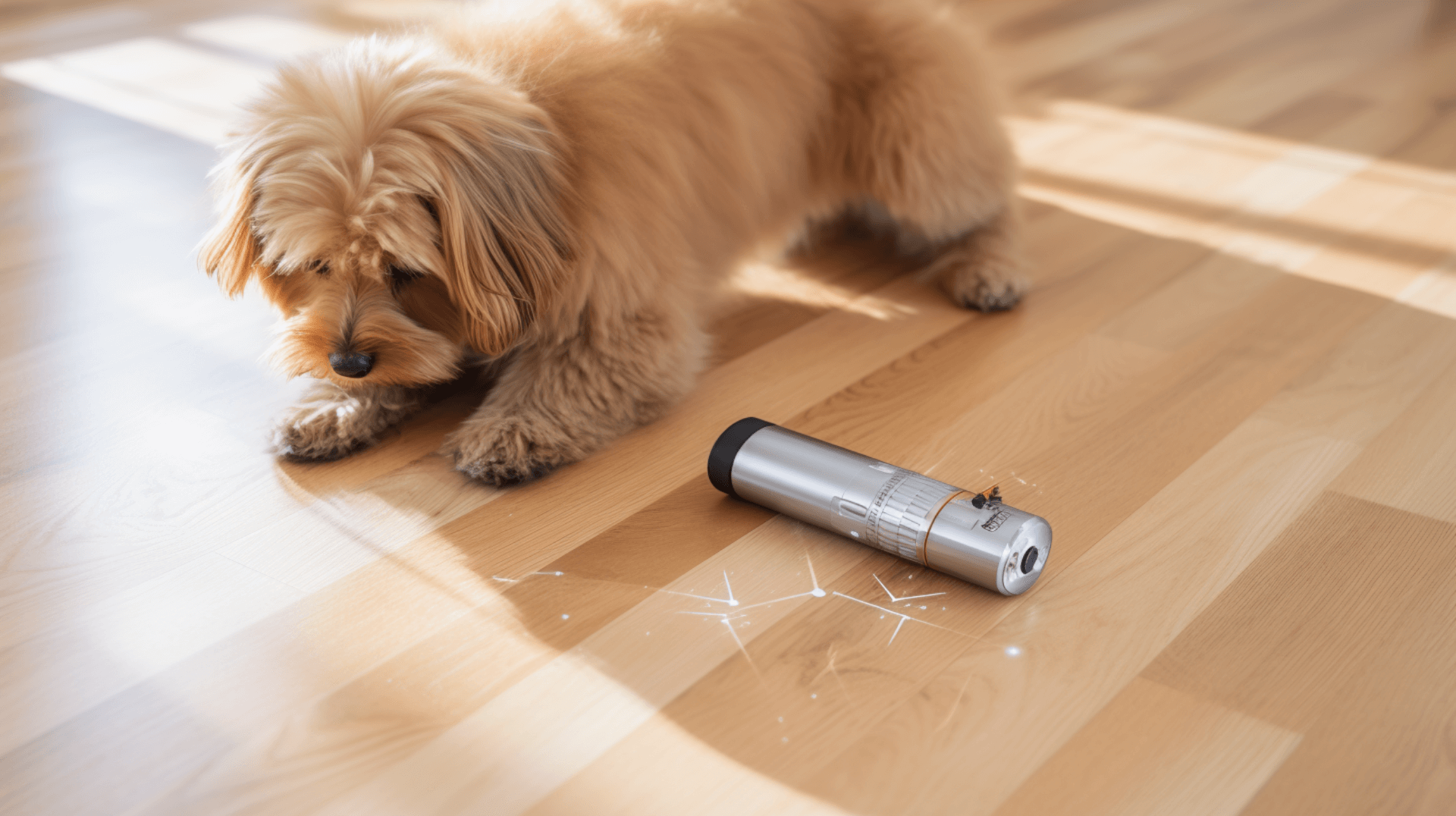
Applying a protective coating to a wooden floor is an important step in ensuring maximum protection from pet scratches. The application process should be done carefully and correctly to ensure the coating is applied properly and provides the desired level of protection.
The first step is to prepare the floor for the protective coating. This includes cleaning the floor thoroughly and repairing any existing damage. Special attention should be given to areas where timbers, such as purlins and joist ends, enter walls, as decay can be localized in those portions embedded in the masonry. Additionally, it is important to inspect all floor voids for the presence of water or condensate pipes, as these pipes may need to be considered in the design or installation of insulation. Repairs may be required to facilitate the installation of insulation, and the customer should be informed of the time anticipated to undertake the works and any making good that is included in the work being carried out. The customer should also be fully informed of the work being carried out, including an explanation of any areas that are not accessible (these may be whole rooms if floorboards are lifted). Additionally, any openings or hazards should be appropriately cordoned/barriered to ensure safety during the application process.
Once the floor is prepared, the protective coating can be applied. It is important to follow the manufacturer’s instructions for the specific type of coating being used. This may involve using a brush or roller to apply the coating evenly and in a thin layer. It is important to avoid applying too much coating, as this can lead to uneven drying and potential issues with the protective layer.
During the application process, it is important to take safety precautions. This includes wearing protective clothing, such as gloves and a face mask, to protect against any fumes or chemicals. It is also important to ensure the area is well-ventilated and that the protective coating is applied in a well-lit area. Any specific safety considerations, such as cordoning or barriering openings or hazards, should be implemented to ensure the safety of those involved in the application process.
The drying time for the protective coating can vary depending on the type of coating and the number of coats applied. It is important to follow the manufacturer’s instructions for the specific drying time. During the drying process, it is important to keep the area free from foot traffic and to avoid placing any furniture or objects on the floor until it is fully dry.
By following these steps and taking the necessary precautions, you can ensure the maximum protection of your wooden floors from pet scratches.
Beyond Coatings: Other Methods of Protecting Your Wooden Floor
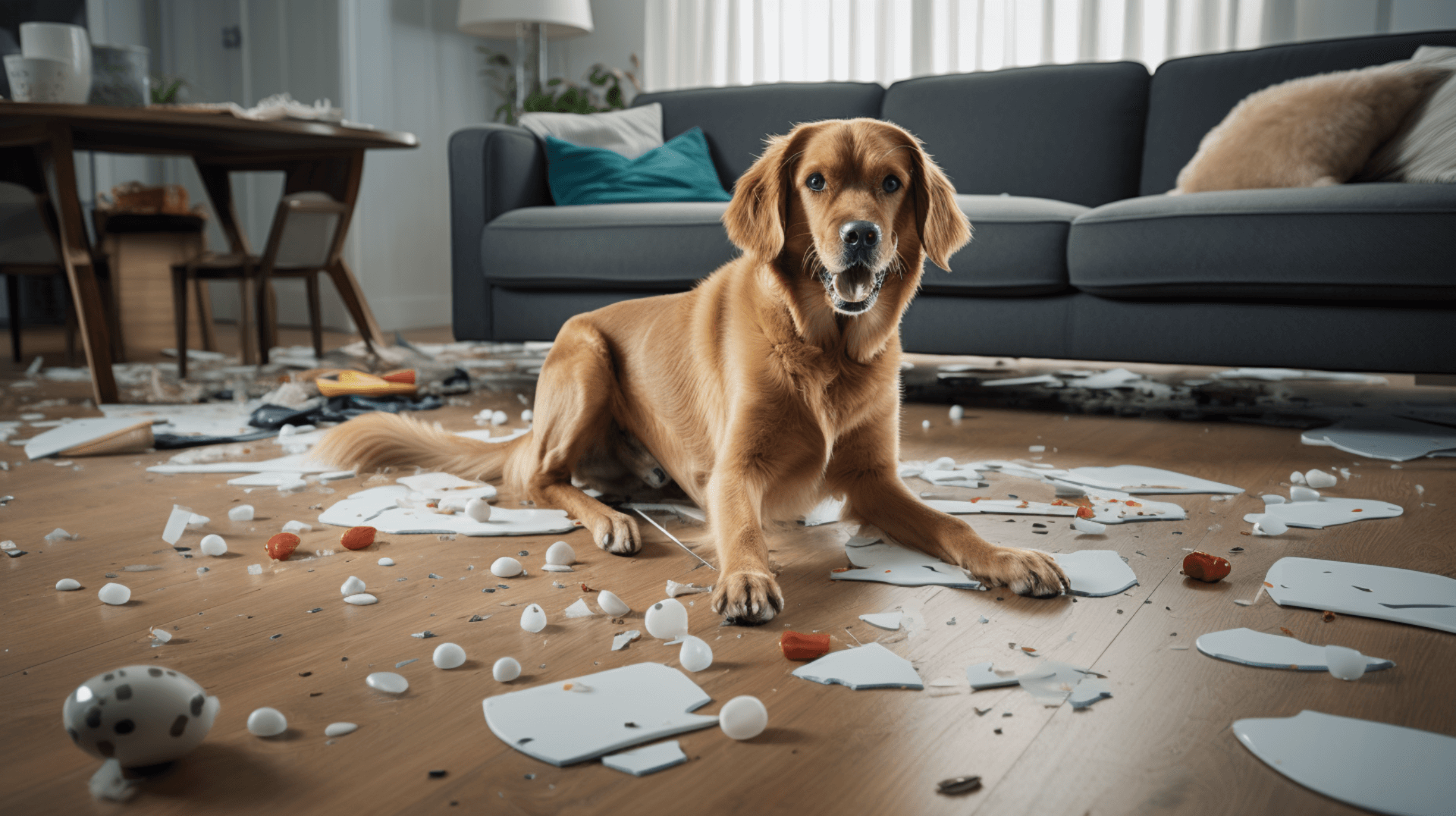
In addition to applying a protective coating, there are other methods of protecting wooden floors from pet scratches. These include using rugs, mats, and furniture pads, as well as pet grooming and training.
Rugs, mats, and furniture pads can be used to protect wooden floors from pet scratches. Placing rugs and mats in areas where pets are likely to scratch, such as near doors or in high-traffic areas, can provide an extra layer of protection. Furniture pads can be attached to the feet of furniture to prevent scratches when pets jump or move around. While these methods can be effective in preventing scratches, it’s important to note that they may not offer the same level of protection as a dedicated protective coating.
Pet grooming and training also play a crucial role in protecting wooden floors from pet scratches. Regular grooming helps to keep pets’ nails trimmed, reducing the risk of scratches when they walk or play on the floor. Additionally, training pets to stay off furniture and other areas of the floor can significantly minimize the chances of scratches occurring.
Furthermore, it’s important to ensure that the floor is properly insulated to improve its thermal performance. Adding extra insulation to a suspended timber floor can help regulate temperature and reduce the risk of moisture-related issues. It’s recommended to consult with a professional to determine the best insulation materials and methods for your specific floor type.
By combining these methods, including the use of rugs, mats, furniture pads, pet grooming, training, and proper insulation, you can provide comprehensive protection for your wooden floors against pet scratches while maintaining a safe and comfortable environment for your pets.
Maintenance Matters: Keeping Your Wooden Floor ScratchFree
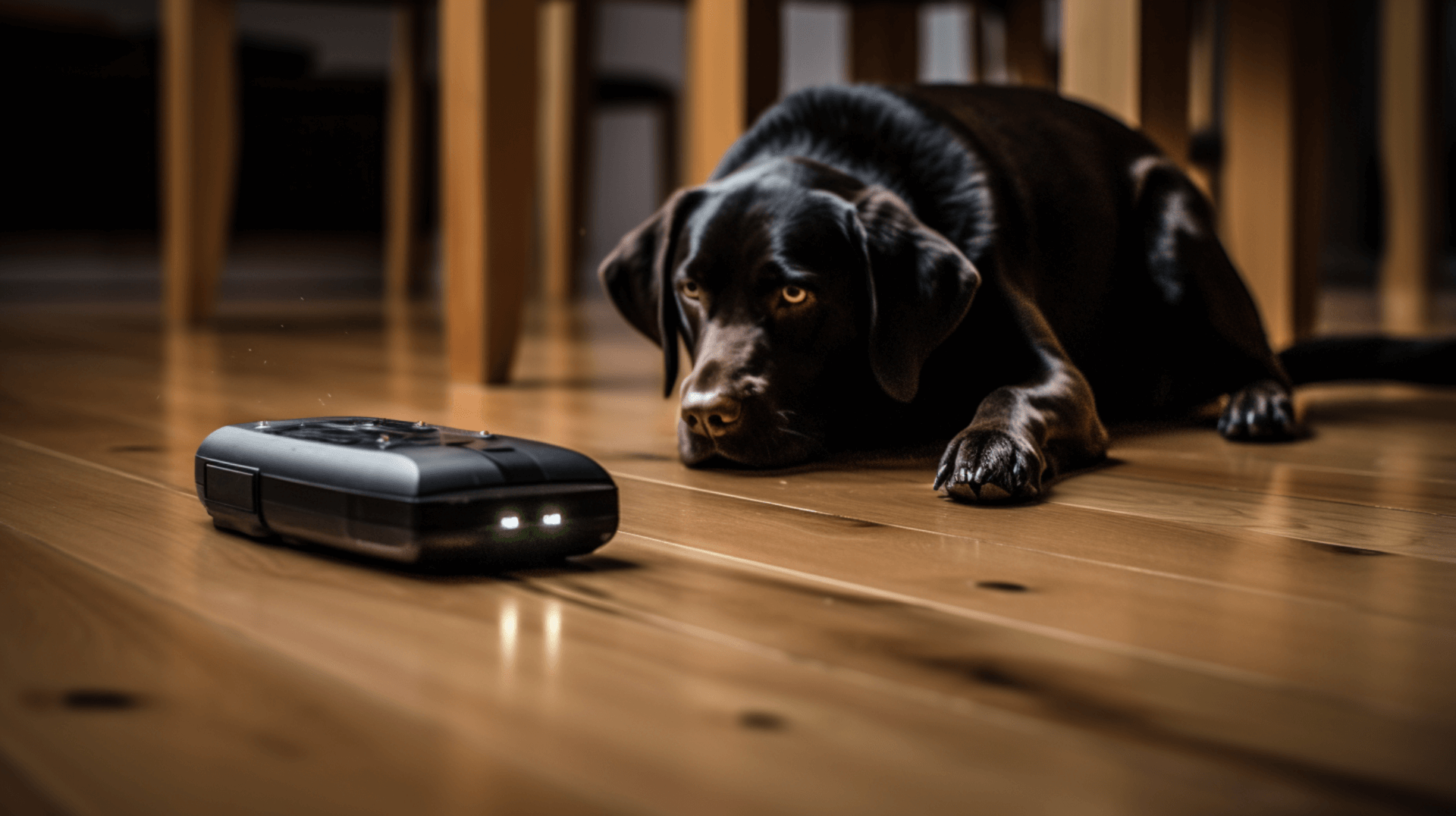
Maintaining a wooden floor with a protective coating is essential for keeping it scratch-free. Proper cleaning practices and regular reapplication of the protective coating are key to ensuring the floor remains in good condition.
When cleaning a wooden floor with a protective coating, it is important to use a mild detergent and warm water. A soft cloth or mop should be used to avoid scratching the floor. It is also important to avoid using abrasive cleaners or scrubbing too hard, as this can damage the protective coating.
The protective coating should be reapplied regularly to ensure maximum protection. The frequency of reapplication will depend on the type of coating and the amount of foot traffic the floor receives. It is recommended to consult with a professional to determine the best reapplication schedule for your specific floor type, taking into consideration the amount of traffic and any signs of decay or infestation.
Inspecting the floor for signs of decay or infestation, such as rot or fungal growths, is crucial for maintaining its condition. This can be done by visually inspecting the floor and probing with a sharp implement, such as a bradawl. Additionally, it is important to inspect the floor voids for the presence of water or condensate pipes, as these pipes may need to be considered in the design or installation of insulation.
If any signs of decay or infestation are found, it is important to address them before reapplying the protective coating. Repairs may be necessary to ensure the floor is in a suitable condition for coating. Additionally, proper insulation should be considered to improve the floor’s thermal performance and reduce the risk of moisture-related issues.
By following these maintenance practices, including proper cleaning, regular reapplication of the protective coating, and thorough inspections for decay or infestation, you can keep your wooden floor scratch-free and in optimal condition for years to come.
When Scratches Happen: Repairing Your Wooden Floor
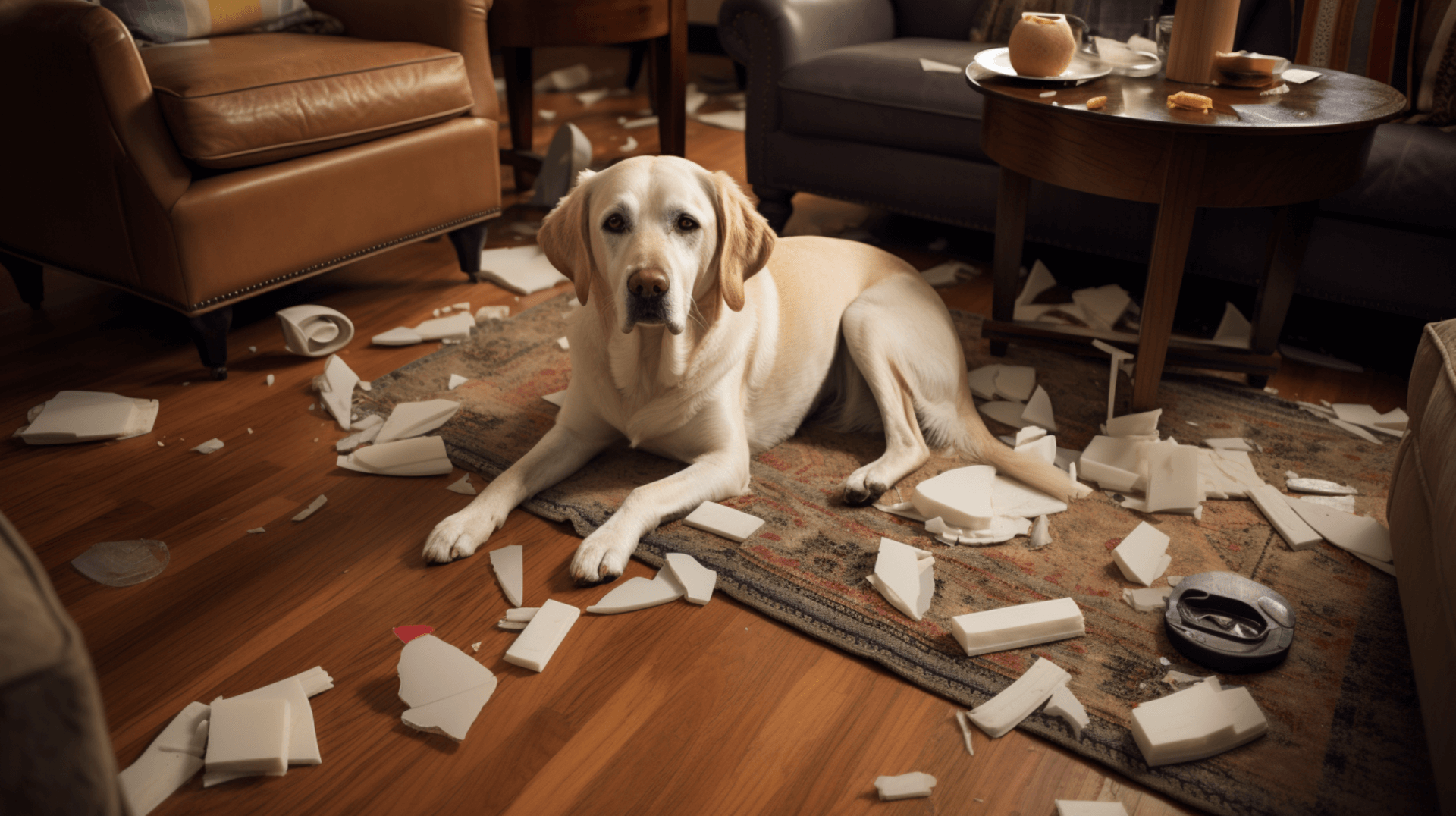
When scratches occur on a wooden floor, it is important to repair them promptly to prevent further damage. Minor scratches can usually be repaired with a few simple steps, while major scratches may require more extensive repairs.
For minor scratches, the first step is to clean the area with a mild detergent and warm water. Once the area is clean, a wood filler can be used to fill in the scratch. The filler should be applied in thin layers and allowed to dry completely before sanding it down to a smooth finish.
For major scratches, the first step is to remove any loose debris from the area. A wood putty can then be used to fill in the scratch. The putty should be applied in thin layers and allowed to dry completely before sanding it down to a smooth finish.
The materials needed for scratch repair include a mild detergent, warm water, wood filler, wood putty, sandpaper, and a wood stain. It is important to use a wood stain that matches the existing color of the floor.
To ensure a professional-looking repair job, it is important to take the time to properly prepare the area and use the right materials. This includes using a wood filler or putty that matches the color of the surrounding wood and sanding it down to a smooth finish. It is also recommended to consult with a professional floor sanding and restoration company for expert advice and assistance in repairing scratches on wooden floors.
By following these steps and using the appropriate materials, you can effectively repair minor and major scratches on your wooden floor and restore its appearance.
Professional Help: When to Call in the Experts

GJP Floor Sanding offers a range of services for scratch repair and floor protection, including floor sanding, staining, and sealing. Floor sanding is an effective way to remove scratches and restore the appearance of a wooden floor. Staining and sealing can also help to protect the floor from further damage. Professional floor sanding can also help to improve the thermal performance of the floor, reducing the risk of moisture-related issues.
In addition to floor sanding, staining, and sealing, professional floor sanding and restoration companies can provide expert advice and assistance in addressing any signs of decay or infestation. They can also help with the installation of insulation to improve the floor’s thermal performance. Additionally, they can assist with repairs of defects, additional ventilation, and making good of any damage caused.
Professional floor sanding and restoration companies like GJP Floor Sanding have the expertise and knowledge to ensure that the installation and repair processes are carried out correctly. We can verify the correct address for installation, provide advice on any necessary precautions, and follow specific safety considerations recommended by the manufacturer of the product or system utilized.
By seeking professional help from GJP Floor Sanding, you can benefit from our range of services and expertise to maintain the aesthetics and durability of your wooden floor. Our attention to detail and knowledge of best practices will help ensure a professional-looking repair job and a floor that remains in optimal condition.
Insights from GJP Floor Sanding Experts

GJP Floor Sanding experts offer a range of tips for protecting wooden floors from pet scratches. The first tip is to keep pets’ nails trimmed and filed to reduce the risk of scratching the floor. Additionally, it is important to use a protective coating on the floor to provide a barrier against scratches.
When applying protective coatings or repairing scratches, it is important to avoid common mistakes such as using the wrong type of coating or applying the coating too thickly. It is also important to ensure that the coating is applied evenly and allowed to dry completely before walking on the floor.
The latest trends and products in wooden floor protection include water-based coatings, which are becoming increasingly popular due to their low VOC content and quick drying time. Additionally, there are a range of products available for scratch repair, including wood fillers, putties, and stains.
When installing insulation, it is important to consider the floor voids and any pipes present in the sub-floor. The void will have an increased risk of freezing should the floor be insulated, and the pipe left exposed to the colder void environment after the works. Repairs may be necessary to facilitate the installation of insulation, and it is important to consult with a professional to ensure proper installation and avoid any potential issues.
By following these tips and utilizing the latest trends and products in wooden floor protection, homeowners and business owners can effectively protect their floors from pet scratches and maintain their beauty and durability.
Ready to Protect Your Wooden Floor? Contact GJP Floor Sanding
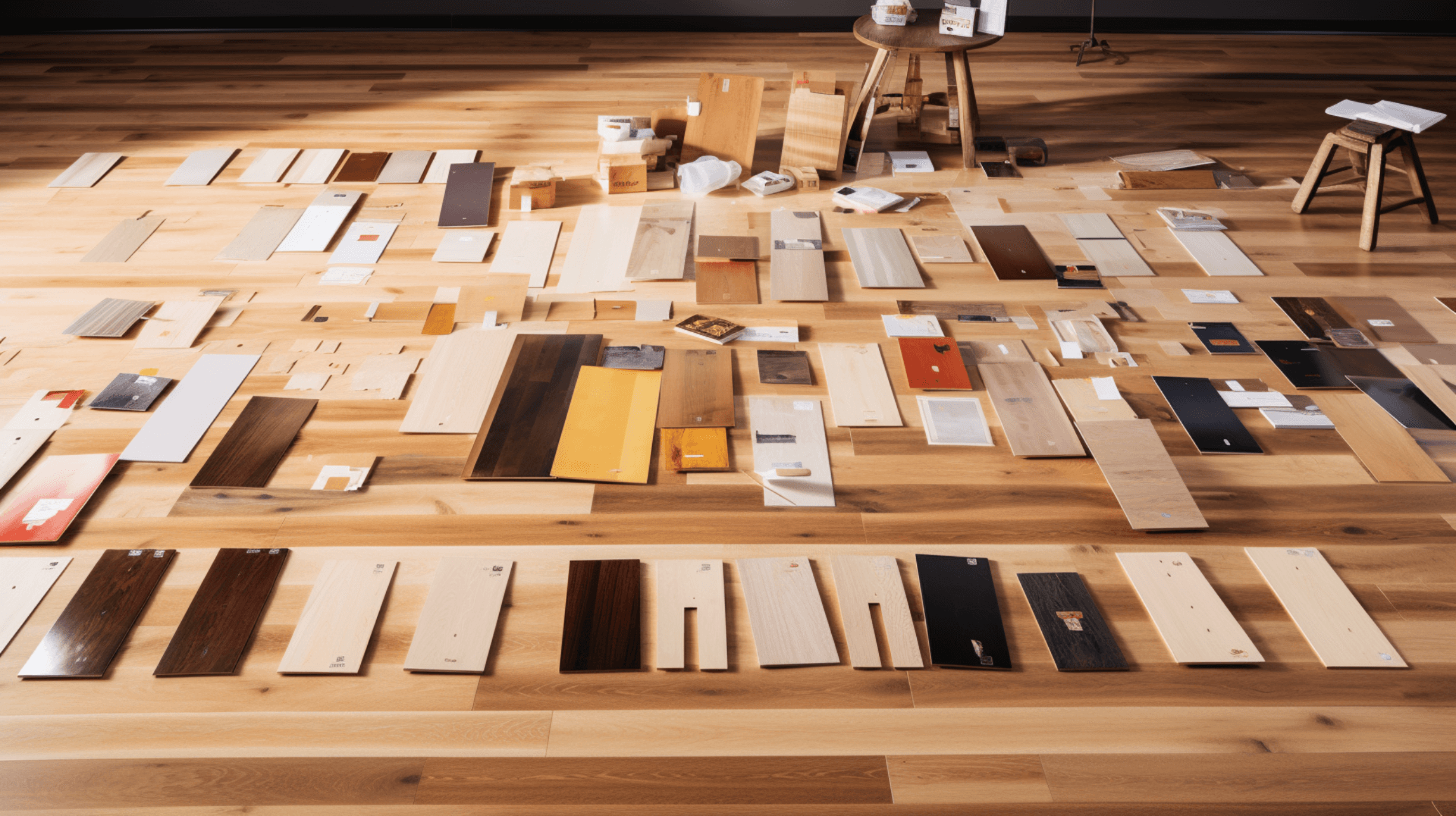
GJP Floor Sanding is the leading provider of wooden floor protection and repair services. With years of experience and expertise, we offer a range of services to help protect and maintain the beauty and durability of your wooden floor.
To get in touch with GJP Floor Sanding for a consultation or service request, you can contact us via our website or call our customer service line. When contacting GJP Floor Sanding, it is important to have the following information ready: the type of floor, the size of the area, any photos of the area, the presence of internal decay in large-section timbers, water or condensate pipes in the sub-floor voids, damp-proof courses, condensation, making good, post-installation checks, training and vocational competence, and any repairs needed. Additionally, it is important to provide information about the type of insulation, the presence of any services or damp-proof courses, and any ventilation requirements.
GJP Floor Sanding offers a range of services for scratch repair and floor protection, including floor sanding, staining, and sealing. We also provide expert advice and assistance in addressing any signs of decay or infestation. Our team of professionals can guide you through the process of selecting the right services and materials for your specific needs. We can also provide guidance on best practices for retrofit floor insulation, health and safety considerations, and building regulations.
By choosing GJP Floor Sanding, you are choosing a company that not only offers a wide range of services but also has the knowledge and expertise to provide you with the best solutions for protecting and repairing your wooden floor. Our attention to detail and commitment to customer satisfaction make us the ideal choice for all your wooden floor protection and repair needs.
